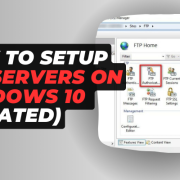In the present data-centred commercial environment, organisations are progressively acknowledging the significance of managed payroll as a potent resource for making well-informed choices. Salary, formerly perceived mainly as a transactional role, has transformed into a strategic advantage that provides a valuable understanding of personnel administration, fiscal planning, and general business achievement.
Workforce Optimisation
One of the most obvious advantages of smartly managed payroll analysis is its potential to assist organisations in optimising their staff. Businesses can spot trends in employee turnover, absenteeism, and overtime by reviewing historical payroll data. These insights empower HR and management teams to make data-driven hiring, staffing, and employee retention decisions.
For example, if data shows a steady increase in overtime charges, this might be a sign of understaffing or inefficient work procedures. Businesses may alter their workforce planning using this knowledge to save overtime expenses and promote a healthy work-life balance for workers.
Budgeting and Cost Control
Effective budgeting is critical for every organisation’s financial health. Payroll information is crucial for planning and expense control. Businesses may properly forecast future labour expenses, including salary, benefits, and taxes, by analysing previous payroll data. This aids in the development of accurate financial predictions and the establishment of budgets that are in line with the company’s aims and objectives and can also be used to identify cost-cutting options.
For example, if a firm frequently pays high levels of overtime, it may signal a need for process changes, better task allocation, or employing extra workers to fulfil demand, resulting in cost savings.
Performance Management
Organisations can analyse the efficacy of their compensation schemes by comparing payroll with employee performance indicators. Are high-performing employees properly rewarded? Are low-performing employees given adequate motivation to improve? These insights can assist in answering these queries as well as guiding performance reviews and pay modifications.
Furthermore, it may be used to track bonuses, commissions, and other incentive programmes to ensure they are aligned with organisational goals and drive desirable employee behaviours.
Compliance and Risk Mitigation
Compliance with labour laws and tax rules is a primary responsibility for firms in an increasingly complicated regulatory environment. Payroll statistics can assist organisations in maintaining compliance and mitigating the risks associated with noncompliance. Auditing it on a regular basis for correctness and compliance with tax regulations and labour rules can help to avoid costly penalties and legal troubles.
It may also be used to track compliance with internal regulations and processes. It may, for example, assist in verifying that time and attendance records are consistent with corporate regulations, lowering the risk of payroll fraud or inaccuracy.
Benchmarking and Industry Insights
Organisations may acquire insights into how their compensation and labour expenses compare to similar firms by comparing data with industry standards. This data may be used to make choices regarding compensation modifications, benefit packages, and personnel acquisition methods in order to stay competitive in the market.
Understanding industry trends through payroll data analysis may assist businesses in staying ahead of the competition. For example, if it shows that remote work is becoming more popular in related industries, a firm might modify its rules to attract and retain top personnel by providing flexible work arrangements.
Employee Engagement and Satisfaction
Payroll data anomalies, such as frequent pay disparities or delays, might be early warning signs of employee unhappiness. It can also reveal high turnover rates, indicating possible concerns with the work environment or management practices.
Using that to detect and fix these issues may boost employee morale, retention rates, and overall job satisfaction. Employees who are satisfied are more likely to be productive and contribute positively to the company’s success.
Predictive Analytics
Corporations can foresee future workforce patterns and identify possible issues before they worsen by using advanced analytics and machine learning algorithms. Predictive analytics, for example, can assist in predicting future attrition rates, allowing HR departments to take preemptive actions to retain important staff.
Predictive analytics may also help with labour planning by anticipating employment requirements based on historical data, seasonal trends, and market circumstances. This helps organisations to adapt quickly to changing business demands.
Data Security and Privacy
While it is critical to use payroll for decision-making, it is also critical to prioritise data security and privacy. Protecting sensitive employee information is not only a legal duty, but it is also essential for preserving trust and reputation.
To protect data from breaches and unauthorised access, organisations must use strong data security measures such as encryption, access limits, and frequent audits. Data protection standards are non-negotiable, and failing to comply can result in harsh fines.
Conclusion
Payroll data has matured into a strategic asset capable of considerably influencing an organization’s decision-making processes in 2023. Its insights provide a multitude of options for organisations to prosper in a competitive climate, from optimising the workforce and controlling costs to increasing compliance and employee engagement.
Organisations can make educated, data-driven decisions that promote success and development by recognising the value of managed payroll and investing in the tools and knowledge required to analyse it effectively.















Comments